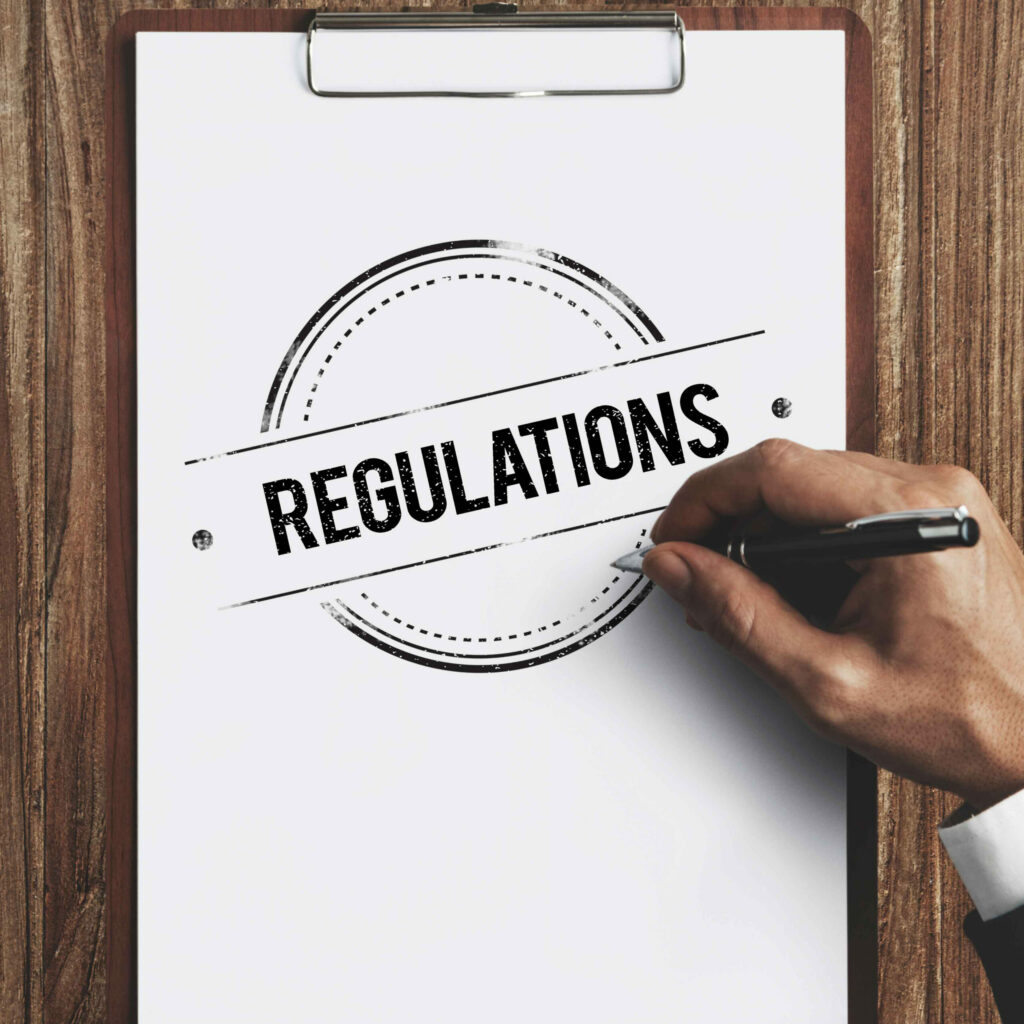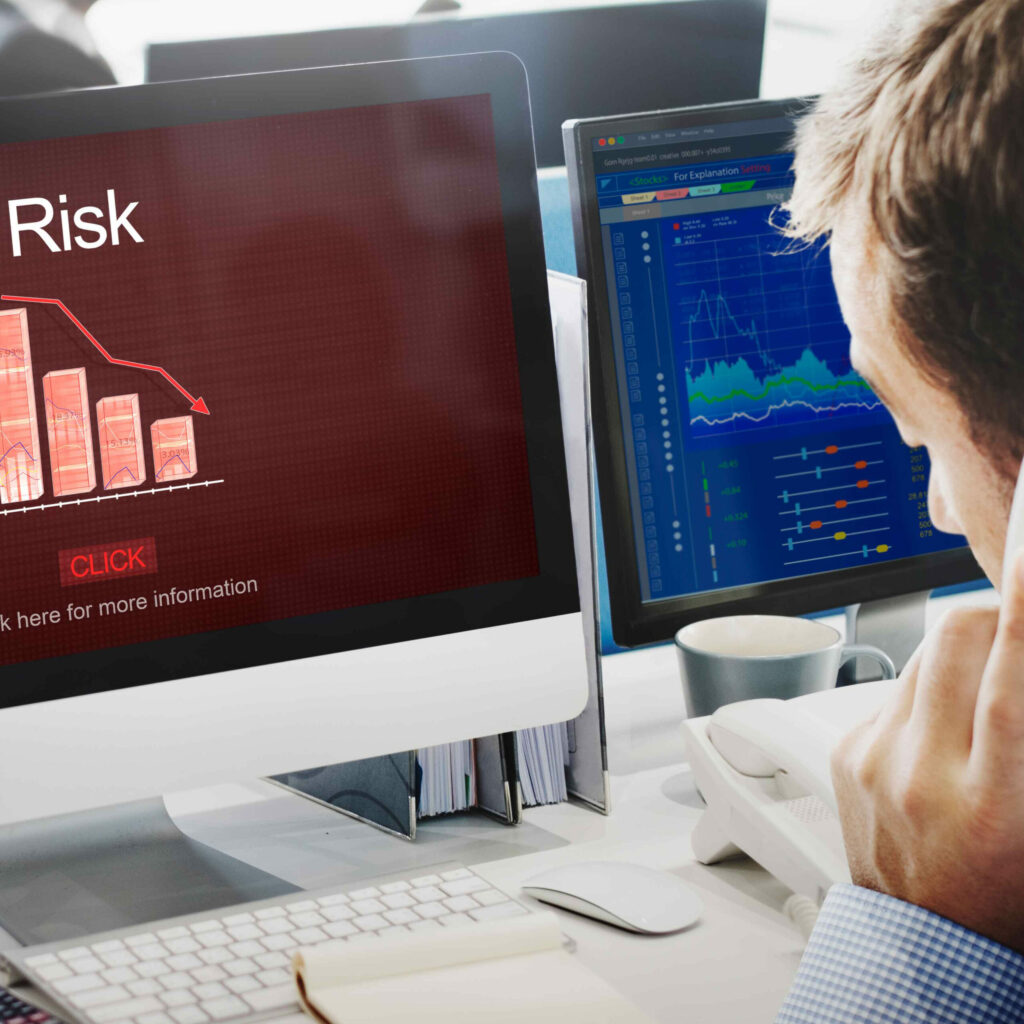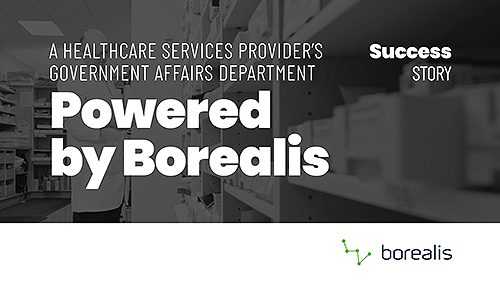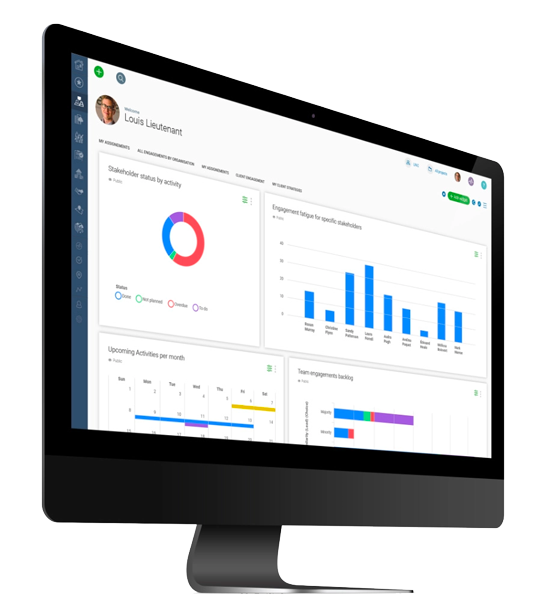El capitalismo de los grupos de interés ha experimentado un notable auge en los últimos tiempos. Esto, debido en gran medida a la creciente concienciación sobre los problemas medioambientales, el aumento de la desigualdad mundial y la sensación de vulnerabilidad colectiva provocada por el virus COVID, que por sí solo causó estragos en las actividades empresariales mundiales durante varios trimestres financieros.
A la luz de esta creciente concienciación, las empresas son ahora mucho menos proclives a considerar el relacionamiento con los grupos de interés como una inversión » facultativa». Atrás quedaron los días en que se restaba importancia a la influencia de los grupos de interés en el éxito -o fracaso- de los proyectos y actividades empresariales. En todo caso, la influencia de los grupos de interés va en aumento.
Las organizaciones que implantan un sistema de gestión con los grupos de interés se enfrentan a un gran reto, sin embargo, la pregunta sigue en el aire: ¿cómo medir eficazmente el relacionamiento con los grupos de interés?
¿Qué es el relacionamiento con los grupos de interés y por qué medirlo?
El relacionamiento con los grupos de interés se refiere a la implicación activa y la consideración de los intereses de varias partes, más allá de los accionistas, en los procesos de toma de decisiones de la organización. Esto incluye a empleados, proveedores, clientes, socios y la sociedad en general. Medir el relacionamiento con los grupos de interés es esencial porque garantiza que las estrategias y acciones de una empresa se alineen con las necesidades y expectativas de todos los grupos de interés relevantes, no sólo de los accionistas.
Un estudio de Harvard Business Review sugiere que dar prioridad a los intereses de los grupos de interés por encima de los beneficios inmediatos puede conducir a mejores resultados financieros a largo plazo.. Al implicar a las partes interesadas, las empresas pueden fomentar un mayor compromiso de los empleados, lo que en última instancia contribuye a obtener mejores resultados financieros. Por lo tanto, medir el relacionamiento con los grupos de interés permite a las empresas medir la eficacia con la que están involucrando y respondiendo a estos diversos grupos, lo que puede tener un impacto directo en su éxito general y su sostenibilidad.
Definición e importancia del relacionamiento con los grupos de interés
La participación con los grupos de interés requiere la implicación activa de las personas que pueden verse afectadas por las decisiones de una organización o que pueden influir en su aplicación. Estas personas pueden respaldar o discrepar con las decisiones, ejercer influencia en la organización o en la comunidad que la rodea, desempeñar funciones oficiales pertinentes o verse afectadas a largo plazo.
El relacionamiento con los grupos de interés es fundamentalmente una práctica desprovista de juicio moral. Constituye un proceso dinámico caracterizado por los intercambios interactivos, el respeto mutuo, el diálogo y el potencial de cambio transformador, en lugar de un enfoque unilateral de la gestión de las partes interesadas.
Los beneficios de medir el relacionamiento con los grupos de interés para el desempeño organizacional
Generar confianza y establecer relaciones

La interacción con los grupos de interés, desde los clientes a los inversores, alimenta la confianza y cultiva lazos sólidos. Las empresas, al integrar a los grupos de interés en las decisiones y valorar sus opiniones, dan muestras de transparencia y responsabilidad. Esto fomenta alianzas duraderas y eleva el prestigio de la organización, reforzando su reputación en materia de integridad y colaboración.
Mejoramiento de las estrategias de relacionamiento

Los datos recopilados sobre las partes interesadas proporcionan información valiosa que puede orientar a la empresa hacia las mejores estrategias de compromiso que puede poner en marcha, basándose en las características únicas de los grupos o partes interesadas específicos.
Cumplimiento de la normativa

Los proyectos a gran escala, como los relacionados con el sector petrolero y gas, así como las energías renovables, están sujetos a innumerables leyes y normativas. Por tanto, es imprescindible saber cómo medir el relacionamiento con los grupos de interés. Las empresas energéticas están obligadas a informar a los organismos gubernamentales que las supervisan, sobre todo en cuestiones como la aceptación social.
Optimización de la asignación de recursos

Disponer de datos significativos sobre los cambios en la opinión de los grupos de interés le permite medir el éxito de las iniciativas y garantizar que sus inversiones se dirigen a los lugares adecuados.
Gestión de riesgos y problemas

La participación proactiva de los grupos de interés contribuye a prevenir y abordar posibles riesgos, problemas y preocupaciones antes de que se conviertan en crisis. Una comunicación coherente permite a las empresas detectar problemas emergentes, recopilar indicadores tempranos y poner en marcha estrategias preventivas. Además, proporciona un foro para abordar las quejas, resolver conflictos y reducir el daño a la reputación mediante un diálogo transparente.
Indicadores clave para medir la participación de los grupos de interés
Explorar los indicadores de los grupos de interés ofrece información crucial sobre la dinámica del proyecto. Evaluar el nivel de compromiso, la puntuación de satisfacción, el impacto de la influencia y el retorno de la inversión en el compromiso proporciona una comprensión global del relacionamiento, la satisfacción, la influencia y la eficacia de los esfuerzos de los grupos de interés.
1. Nivel de relacionamiento
Este indicador ofrece una imagen exacta de la implicación y compromiso de los grupos de interés con el proyecto. Evalúa la frecuencia y calidad de las interacciones, la participación en reuniones, la finalización de tareas y la alineación con los objetivos del proyecto. Un alto nivel de relacionamiento sugiere una participación activa de los grupos de interés, así como entusiasmo y compromiso, lo que es un buen pronóstico para el éxito del proyecto.
2. Grado de satisfacción
La medición de la satisfacción de las partes interesadas mide su satisfacción general con los resultados y procesos del proyecto. Consiste en recabar opiniones sobre diversos aspectos, como los resultados del proyecto, la claridad de la comunicación, la capacidad de respuesta de la dirección del proyecto y el valor percibido de los productos del proyecto. Una puntuación alta indica que los grupos de interés están satisfechos con el progreso y los resultados del proyecto, lo que fomenta las relaciones positivas y la colaboración a largo plazo.
Esta variable evalúa el grado de influencia de las partes interesadas en los resultados del proyecto y su impacto recíproco. Tiene en cuenta factores como el poder, el interés y los niveles de compromiso de las partes interesadas. Comprender la influencia de las partes interesadas ayuda a los responsables de proyecto a predecir retos, alinear estrategias y cultivar alianzas mutuamente beneficiosas.
4. Retorno de Inversión del Relacionamiento
Al cuantificar el ROI (retorno de la inversión) de los esfuerzos de relacionamientode las partes interesadas, esta variable permite a los responsables de proyecto evaluar la eficacia de sus estrategias de relacionamiento. Se trata de comparar los costes en los que se ha incurrido para involucrar a los grupos de interés con los beneficios obtenidos, como la mitigación de riesgos, la resolución de problemas y la identificación de oportunidades. Un retorno de la inversión elevado indica que los recursos invertidos en la implicación de los grupos de interés producen beneficios significativos, lo que subraya la importancia de las prácticas eficaces de relacionamiento en la gestión de proyectos.
Métodos para medir el impacto del relacionamiento con los grupos de interés en el desempeño de la organización.
A la hora de analizar cómo medir eficazmente el relacionamiento con los grupos de interés, hay una serie de factores que pueden dificultarlo:
- El carácter intangible de cierta información recopilada ( sentimientos favorables u hostiles hacia el proyecto).
- El número y la variedad de puntos de contacto entre la organización y los grupos de interés.
- El hecho de que la información se guarde a menudo en silos
O eso podría parecer. Con las herramientas y los conocimientos adecuados, puede medir fácilmente el compromiso de los grupos de interés y obtener información sumamente valiosa. El primer paso es poner en marcha un sistema de evaluación riguroso que implique la medición periódica y el registro preciso de los resultados, mediante un tablero de control, por ejemplo. Esta información le permitirá identificar tendencias y ajustar el rumbo si es necesario. También hay que asegurarse de que todos los implicados puedan acceder con facilidad todo tipo de datos. Es la única manera de garantizar que todas las personas que deben estar informadas estén al tanto de la evolución de un proyecto, independientemente de quién haya participado en el debate o la reunión (o quién haya llevado a cabo una determinada actividad) con una o varias partes interesadas.
A continuación, hay que determinar los indicadores de resultados (ICR). Para ello, hay que plantearse las preguntas adecuadas:
- ¿Cuál es la finalidad de estos indicadores? ¿A quién o a qué están destinados? ¿En qué decisiones deben basarse?
- ¿Cuál es la naturaleza de la información deseada? ¿Se trata de evaluar procesos o resultados? ¿Se trata de destacar lo positivo o lo negativo?
- ¿De qué recursos disponemos para medir estos indicadores? ¿Disponemos de tiempo, dinero, conocimientos, herramientas, etc.?
Las respuestas a estas preguntas deben conducir a unos objetivos claros y precisos que sirvan de referencia y a la definición de indicadores observables y cuantificables.
Otro aspecto a tener en cuenta es el hecho de que un Director de Relaciones con la Comunidad y un Vicepresidente de Asuntos Públicos no se enfrentan a los mismos retos. La forma en que miden los esfuerzos de implicación de las partes interesadas, los tipos de indicadores que necesitan y cómo los aplicarán diferirán en función de los grupos de interés a los que se dirijan.
¿Cómo influyen estos métodos en el desempeño de la organización?
La implantación de sistemas de evaluación rigurosos y el mantenimiento de datos accesibles mejoran la transparencia y la agilidad de la organización, lo que resulta crucial para mantener la capacidad de respuesta en entornos dinámicos. Al medir y registrar regularmente los resultados, las organizaciones pueden identificar rápidamente las tendencias emergentes y adaptar las estrategias en consecuencia. Este enfoque proactivo mitiga los riesgos y aprovecha las oportunidades, reforzando en última instancia la adaptabilidad de la organización.
Unos indicadores de resultados claros desempeñan un papel fundamental a la hora de orientar las acciones y garantizar la alineación con los objetivos estratégicos.
Proporcionan un marco tangible para evaluar los avances y responsabilizar a los grupos de interés por sus contribuciones. Además, al plantear preguntas pertinentes durante el proceso de desarrollo de indicadores, las organizaciones pueden asegurarse de que las variables de medición elegidas abordan eficazmente las preocupaciones clave y facilitan la toma de decisiones informadas.
Adaptar los enfoques de valoración a las diferentes funciones y grupos de interés reconoce las diversas necesidades y prioridades de la organización.
Este enfoque específico fomenta un compromiso más profundo y cultiva relaciones más sólidas con los grupos de interés, mejorando así la confianza y la colaboración.
Además, al adaptar las estrategias a públicos específicos, las organizaciones pueden maximizar el impacto de sus esfuerzos de compromiso y optimizar la asignación de recursos.
Overall, these methods for measuring the impact of stakeholder engagement on organizational performance not only enable organizations to effectively gauge stakeholder
engagement but also contribute to broader organizational performance.
En general, estos métodos para medir el impacto del relacionamiento con los grupos de interés en el desempeño organiz a cional no sólo permiten a las empresas medir eficazmente el relacionamiento con los grupos de interés, sino que también contribuyen a un desempeño organizacional más amplio.
Al fomentar una cultura de mejora continua y adaptación estratégica, estas prácticas posicionan a las organizaciones de cara al éxito a largo plazo en un entorno en rápida evolución.
Ejemplos de ICR basados en la relacionamiento con los grupos de interés
Los ICR son indicadores vitales que miden el rendimiento de la organización en relación con objetivos específicos, orientan las decisiones estratégicas y ponen de relieve las áreas de mejora. Proporcionan información práctica sobre aspectos clave de las operaciones empresariales, impulsan la responsabilidad y facilitan el crecimiento continuo. Antes hemos hablado de establecer indicadores de rendimiento claros para relacionarse con las partes interesadas. Veamos ahora algunos ejemplos concretos de ICR de compromiso con las partes interesadas.
Ejemplos específicos de ICR relacionados con los grupos de interés.
1. Puntaje de satisfacción de las partes interesadas
Este ICR consiste en recopilar las opiniones de los grupos de interés a través de diversos canales, como encuestas, formularios de opinión o entrevistas directas. Los datos recogidos permiten a la organización evaluar las percepciones de las partes interesadas sobre el rendimiento, la capacidad de respuesta y la eficacia de la organización a la hora de satisfacer sus necesidades y expectativas. Mediante el seguimiento de los resultados de satisfacción a lo largo del tiempo, la organización puede identificar áreas de mejora y realizar ajustes específicos en sus estrategias de relacionamiento.
2. Niveles de relacionamiento con los grupos de interés
Este ICR mide la cantidad y calidad de las interacciones entre la organización y sus grupos de interés. Abarca varias formas de interacción, como reuniones, eventos, comunicaciones y colaboraciones. Mediante el seguimiento de los niveles de relacionamiento, las organizaciones pueden evaluar la profundidad de las relaciones con las partes interesadas e identificar patrones de comunicación y participación. Este ICR ayuda a garantizar que los esfuerzos de relacionamiento sean coherentes, proactivos y adaptados a las necesidades de los distintos grupos de interés.
3. Tasa de retención de los grupos de interés
Este ICR evalúa el porcentaje de partes interesadas que siguen colaborando con la organización a lo largo del tiempo. Refleja la capacidad de la organización para cultivar relaciones a largo plazo y mantener la lealtad de los grupos de interés. Un alto índice de retención indica que los grupos de interés perciben valor en sus interacciones con la organización y están motivados para seguir comprometidos. Por el contrario, un índice de retención decreciente puede indicar insatisfacción o falta de compromiso, lo que lleva a la organización a reevaluar sus estrategias de compromiso y abordar los problemas subyacentes.
4. Índice de Promotores Neto (NPS)
El NPS es una métrica ampliamente utilizada que evalúa la lealtad y el apoyo de los grupos de interés preguntándoles cuál es la probabilidad de que recomienden la organización a otras personas. En función de sus respuestas, los grupos de interés se clasifican en promotores, pasivos o detractores. El NPS se calcula restando el porcentaje de detractores del porcentaje de promotores, lo que da como resultado una puntuación que indica el sentimiento general de los grupos de interés. Un NPS alto indica un fuerte apoyo de las partes interesadas y un boca a boca positivo, mientras que un NPS bajo puede indicar áreas de mejora en el compromiso y la satisfacción de los grupos de interés.
5. Impacto de la influencia de los grupos de interés.
Este ICR mide hasta qué punto las opiniones, comentarios y acciones de los grupos de interés influyen en las decisiones y resultados de la organización. Implica hacer un seguimiento de los casos en los que las contribuciones de los grupos de interés contribuyen directamente a cambios en políticas, proyectos o iniciativas estratégicas. Al evaluar el impacto de la influencia de las partes interesadas, las organizaciones pueden demostrar el valor de los esfuerzos de implicación y garantizar que las perspectivas de las partes interesadas se tienen en cuenta adecuadamente en los procesos de toma de decisiones. Este ICR también ayuda a fomentar la confianza y la colaboración con los grupos de interés mediante el reconocimiento de sus contribuciones y la demostración de receptividad a sus preocupaciones. Inicio del formulario
¿Está listo para ver cómo nuestra solución puede ayudarle a definir y seguir estos indicadores?
Integración de las métricas de participación de los grupos de interés en la estrategia organizativa
Anteriormente discutimos las 4 métricas clave para medir el relacionamiento con los grupos de interés. Después de la identificación, la integración de estas métricas en la estrategia de la organización se convierte en un aspecto primordial. La integración de las métricas de los grupos de interés en estrategias organizativas más amplias implica aprovechar los conocimientos obtenidos de estas métricas para impulsar la toma de decisiones, mejorar las relaciones y maximizar los resultados del proyecto.
Nivel de relacionamiento Sirve como una evaluación del compromiso e involucramiento de los grupos de interés en el proyecto. Al analizar los datos de participación, las organizaciones pueden identificar a los principales interesados que están contribuyendo activamente y aquellos que puedan necesitar apoyo adicional o atención. Esta información puede obtenerse mediante el seguimiento del número de reuniones realizadas con diferentes interesados, la realización de encuestas de retroalimentación para evaluar los resultados de la toma de decisiones, el desarrollo de un índice de colaboración que registre iniciativas conjuntas y recursos compartidos, y fomentando un sentido de propiedad en la mente de los grupos de interés para el proyecto.
Índice de satisfacción proporciona una retroalimentación valiosa sobre las percepciones de los grupos de interés acerca del proyecto, resaltando áreas de fortaleza y áreas que necesitan mejora. Las organizaciones pueden utilizar estos datos para adaptar los procesos del proyecto, las comunicaciones y los resultados con el fin de satisfacer mejor las expectativas de los interesados y mejorar la satisfacción. Las organizaciones pueden emplear el NPS, Ïndice de Promotores Neto, que cuantifica el nivel de satisfacción y mide la probabilidad de que los interesados recomienden el producto o la marca de una organización a otras personas.
El análisis del impacto de la influencia ayuda a las organizaciones a comprender la dinámica de las relaciones con los grupos de interés y las dinámicas de poder dentro del entorno del proyecto. Para identificar la influencia de los grupos de interés de manera efectiva, las organizaciones pueden considerar el desarrollo de un índice que evalúe la influencia de los grupos de interés en factores como el acceso a recursos totales, el poder de toma de decisiones en la comunidad, la destreza legal, entre otros.
La evaluación del Retorno de Inversión del Relacionamiento permite a las organizaciones valorar la eficacia de su inversión en actividades de relacionamiento con los grupos de interés. Al cuantificar los beneficios tangibles derivados de los esfuerzos de participación, midiendo el tiempo de respuesta, haciendo un seguimiento de las quejas y los problemas, incorporando mecanismos de retroalimentación y registrando el alcance y el número de grupos de interés involucrados, las organizaciones pueden justificar la inversión continua en la participación de los grupos de interés y priorizar los recursos donde tendrán el mayor impacto.
En general, la integración de los indicadores sobre los grupos de interés en estrategias organizativas más amplias requiere un enfoque proactivo y basado en datos, que aproveche los conocimientos para optimizar las relaciones con los grupos de interés, mitigar los riesgos y maximizar el éxito del proyecto.

Las quejas nunca deben convertirse en conflictos. Descargue nuestro libro blanco sobre cómo gestionar las quejas
Enfoque de Borealis sobre el relacionameinto con los grupos de interés y la gestión de datos
El software Borealis para la gestión de grupos de interés es algo más que una potente herramienta para organizar los datos derivados de sus actividades de relacionamiento. Sus sencillas funciones de elaboración de informes también facilitan la realización de análisis comparativos.
Cuando se plantee la pregunta de cómo medir eficazmente el relacionamiento con los grupos de interés, Borealis le ayudará a determinar las estrategias de relacionamiento adecuadas para los distintos segmentos. También señala problemas emergentes y le ayuda a reducir los tiempos de respuesta. Facilita la rendición de cuentas y hace que sea mucho más fácil supervisar la variedad de factores que intervienen en la gestión sólida y controlada de los grupos de interés.
4 claves para utilizar el software
- Todos los planes de relacionamiento con los grupos de interés deben incluir un riguroso proceso de evaluación.
- Este ejercicio de evaluación puede resultar difícil, pero es esencial porque lo que se mide se mejora.
- Los indicadores cuantificables deben estar vinculados a objetivos específicos.
- Las funciones de elaboración de informes del software Borealis simplifican todos los aspectos del relacionamiento con los grupos de interés, incluida la medición del éxito de estos esfuerzos.
El enfoque de Borealis para el relacionamiento con los grupos de interés y la gestión de datos es integral y progresista. Aprovechando nuestra plataforma de colaboración integrada en la nube y nuestros informes analíticos, Borealis permite a las organizaciones centralizar los datos, hacer un seguimiento de las preocupaciones y automatizar las tareas manuales de forma eficiente. Con funciones como la cartografía visual, permitimos a los equipos gestionar relaciones complejas y evaluar con precisión las preocupaciones de la comunidad. Además, nuestra visión global, reforzada por 20 años de madurez, garantiza una sólida comprensión de los diversos entornos de las partes interesadas. Borealis da prioridad a la experiencia del usuario con una interfaz intuitiva, cuadros de mando listos para usar y formación multilingüe. Además, nuestro compromiso con la mejora continua es evidente a través de actualizaciones periódicas, análisis basados en IA y el cumplimiento de las normas de seguridad más estrictas. Respaldada por un equipo dedicado de ejecutivos de atención al cliente y habiendo ayudado a más de 400 equipos, Borealis proporciona una solución escalable e integrada para la participación eficaz de los grupos de interés y la gestión de datos.
Empiece hoy mismo a utilizar el software Borealis para el relacionamiento con los grupos de interés.
Casos de estudio ye historias de éxito

Explore how Yamana Gold navigated stakeholder engagement challenges in Quebec’s mining industry. Delve into their approach to building social acceptance and developing trust-based relationships with local populations while adhering toenvironmental regulations.

Discover how Enel Green Power Mexico enhanced information management and collaboration along with breaking down silos with Borealis stakeholder engagement software.
Los retos a la hora de medir el relacionamiento con los grupos de interés.
Aunque este blog ofrece una guía completa para medir eficazmente el relacionamiento con los grupos de interés, aún existen algunos desafíos y trampas comunes que pueden complicar la tarea.
A continuación se exponen tres grandes retos que surgen al medir el relacionamiento con los grupos de interés.




